Yellow oysters (Pleurotus citrinopileatus mushrooms) are a relatively new species of oyster mushroom that have been showing up in all kinds of mushroom hunting boards in the Midwest lately, so I thought it would be good to take a close look at them today. I'll cover their history and identification, invasive status, as well as some tips for harvesting and cooking.
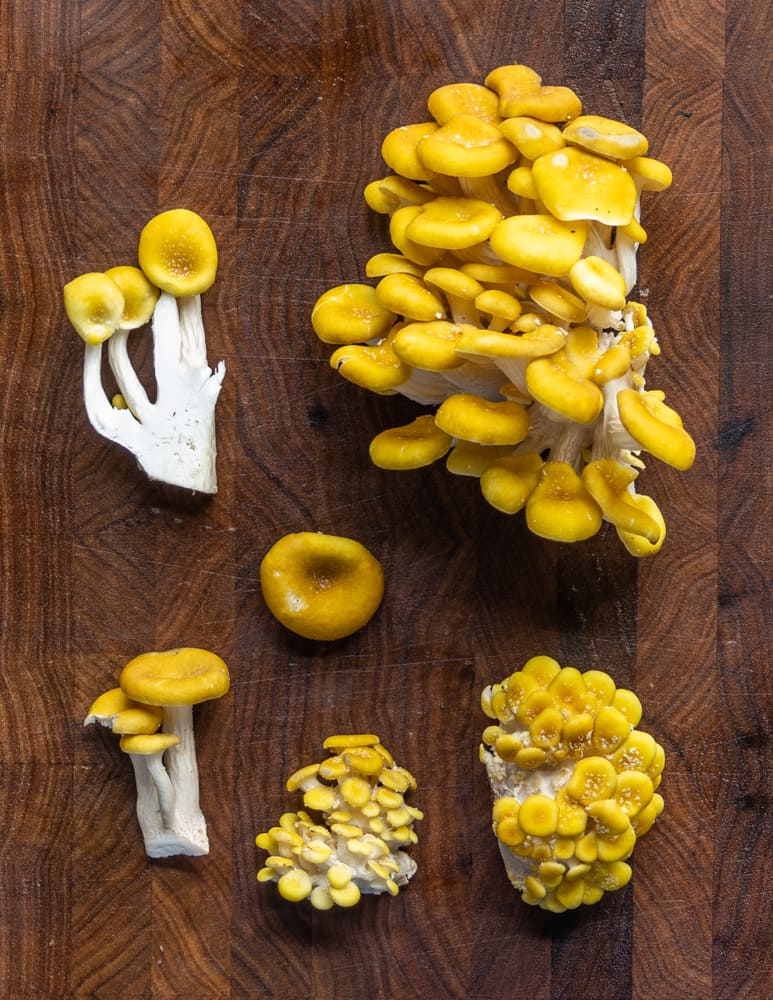
I knew these mushrooms would start showing up sometime where I live, it was just a matter of time. There's plenty of theories and urban legends about their origin, but one thing we know for certain is that yellow oyster mushrooms are not native to North America.
Golden oyster mushrooms are native to the hardwood forests of eastern Russia and northern China, as well as Japan. They're a popular edible mushroom over there and take well to cultivation, so it's no surprise that mushroom cultivation companies started selling them to grocery stores, as well as in grow kits for people at home where their spores can fly with the wind and spread.
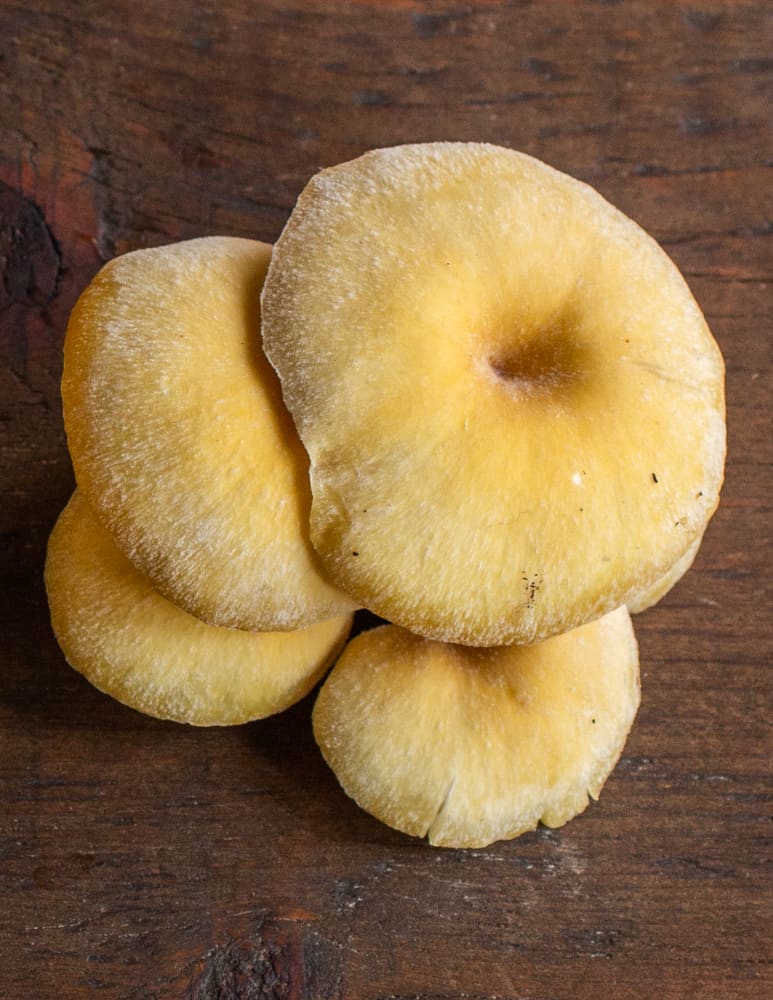
Habitat
Like other Pleurotus species, golden oysters are wood-decomposing saprobes, meaning they digest dying, fallen, and damaged trees.
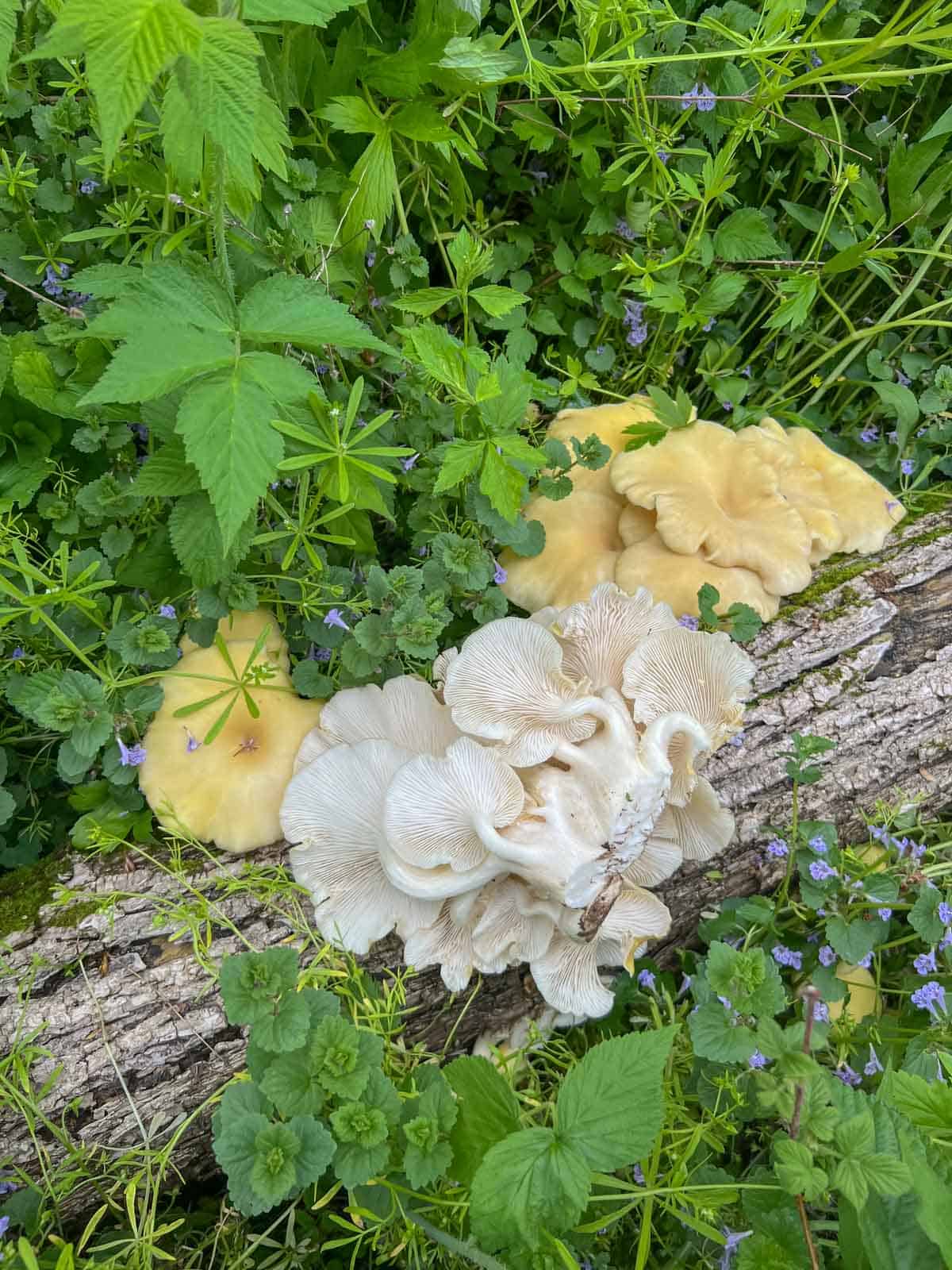
In Minnesota and Wisconsin, they start to fruit at the same time as morels, around the middle of May, but can be found throughout the summer. They're relatively common to find in deciduous hardwood forests with maple, elm, hickory and green ash.
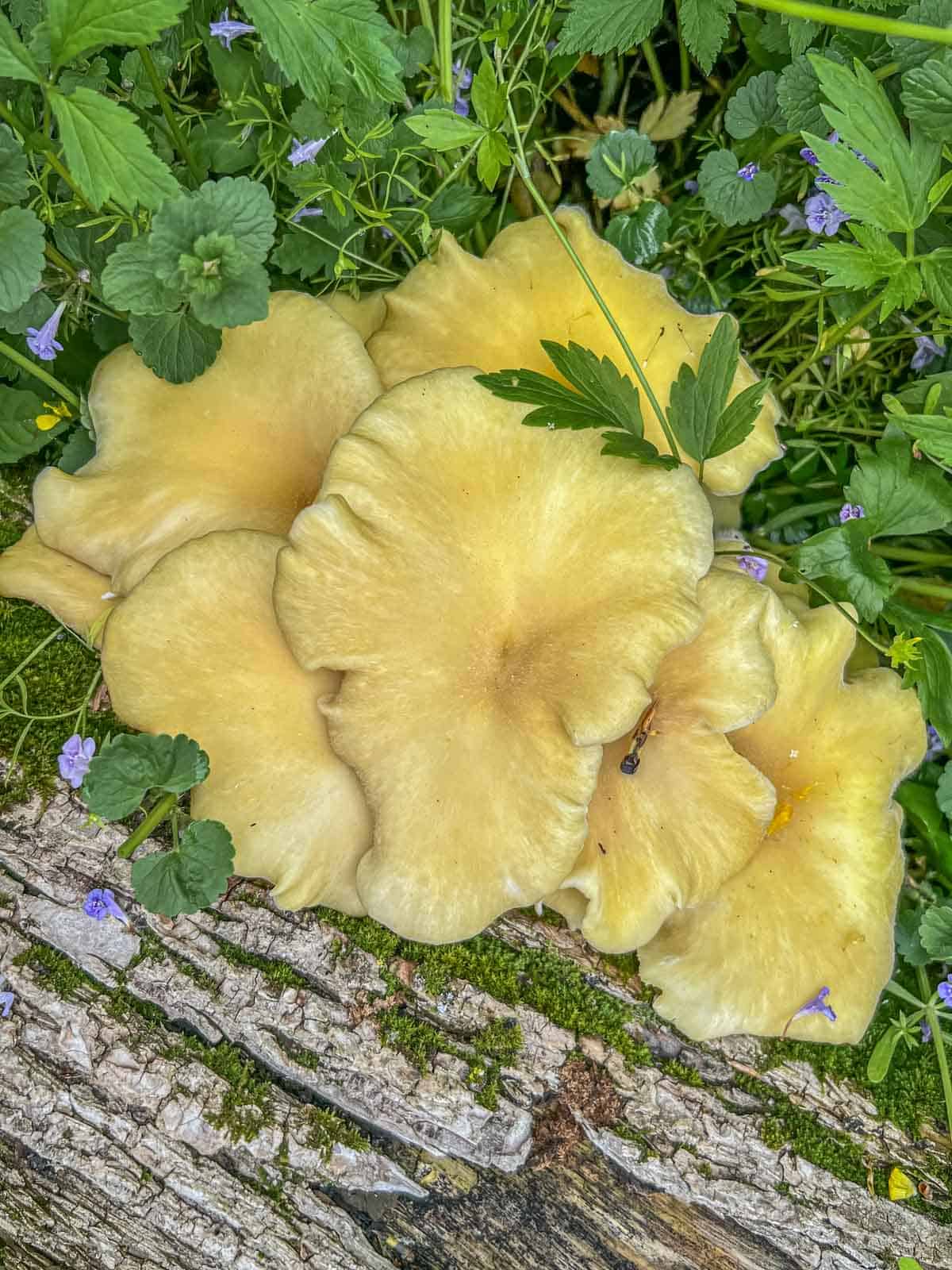
The mushrooms can grow with a number of different hosts, where I live, they seem to exclusively prefer dead elms, similar to the elm oyster. Occasionally I've seen them on black cherry trees.
Are Golden Oysters Mushrooms Invasive?
This is one of the big questions I've seen debated in the foraging community. Here's the story I've been told, and that most people will know.
As rumor has it (and it is just a rumor) a mushroom farm in Dubuque Iowa had a fire, and, over the next few years, the mushrooms began to travel north. As they're easily cultivated, growing yellow oyster mushrooms at home, especially outside, has probably contributed to their spread.
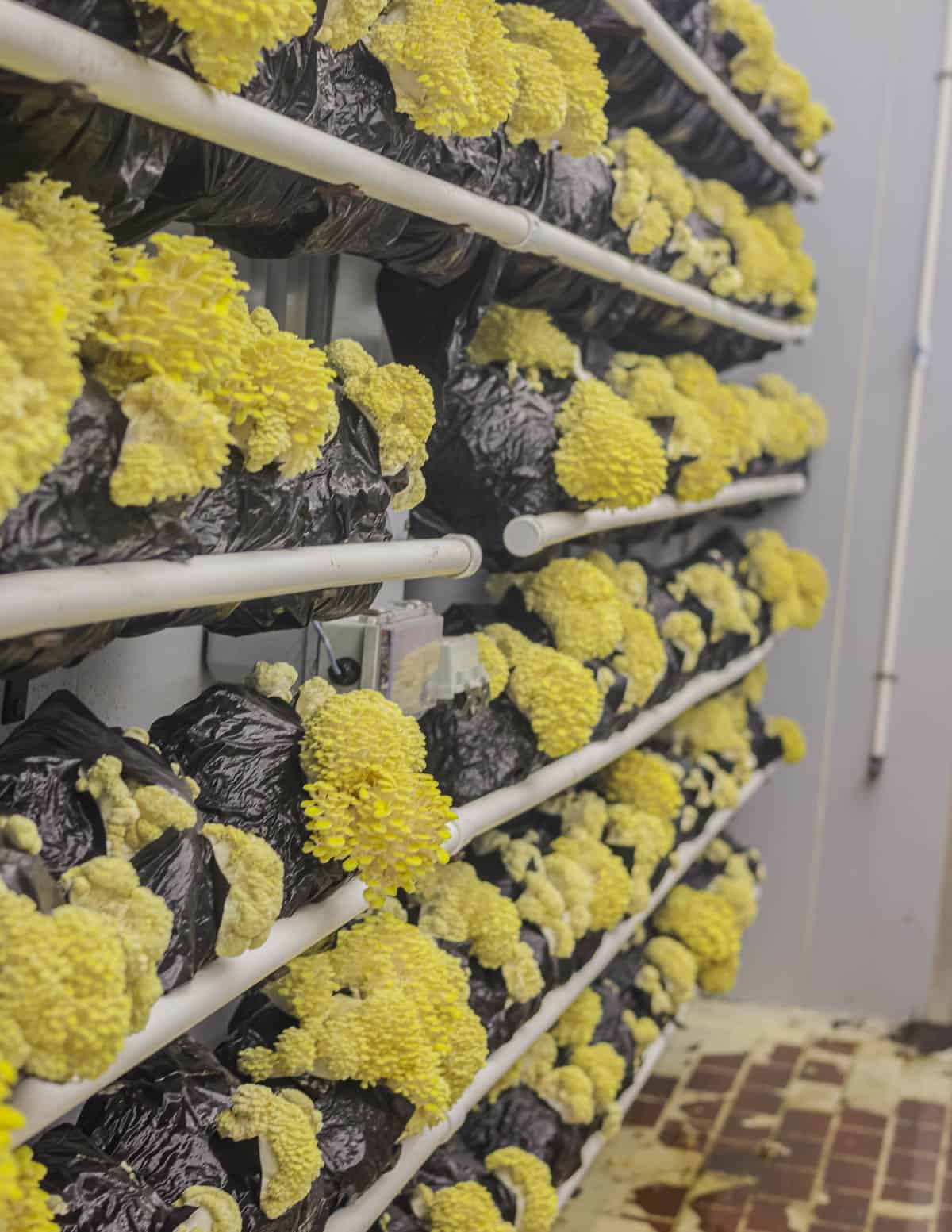
The term "invasive" can be used in a number of ways. While some disagree, and they haven't been legally recognized as invasive (as if it would do anything to stop them) I consider them invasive and describe them to others as such for a couple reasons.
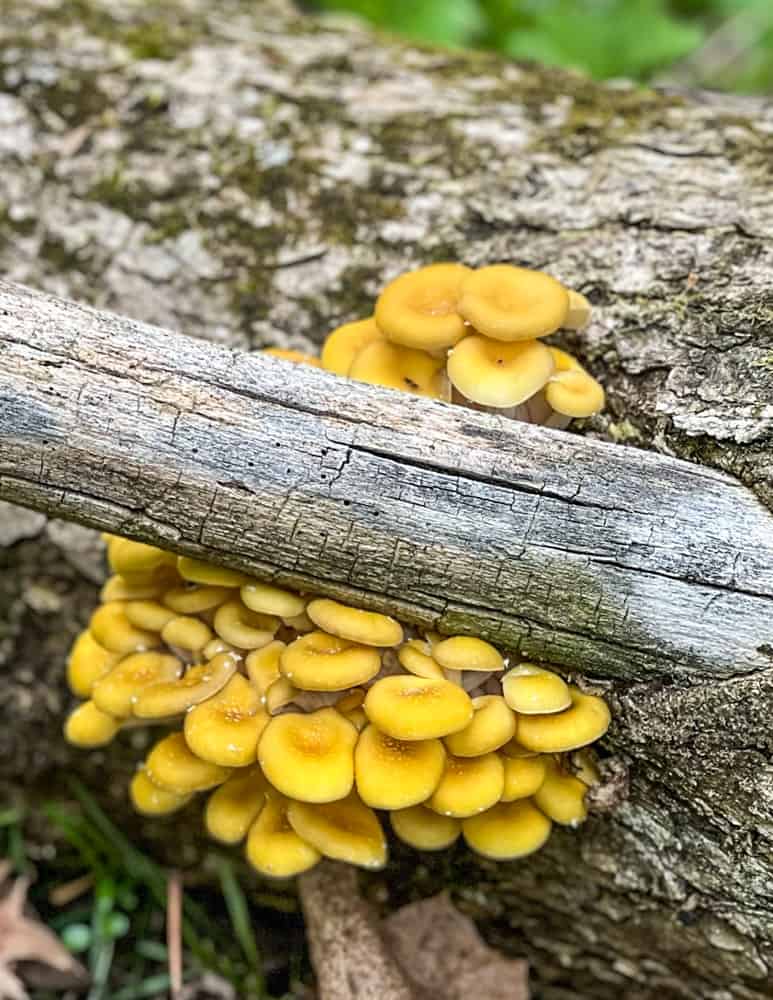
First, the mushrooms aren't native, and they're consuming resources that other native mushrooms (pheasant backs, mica caps, and wild enoki) could use.
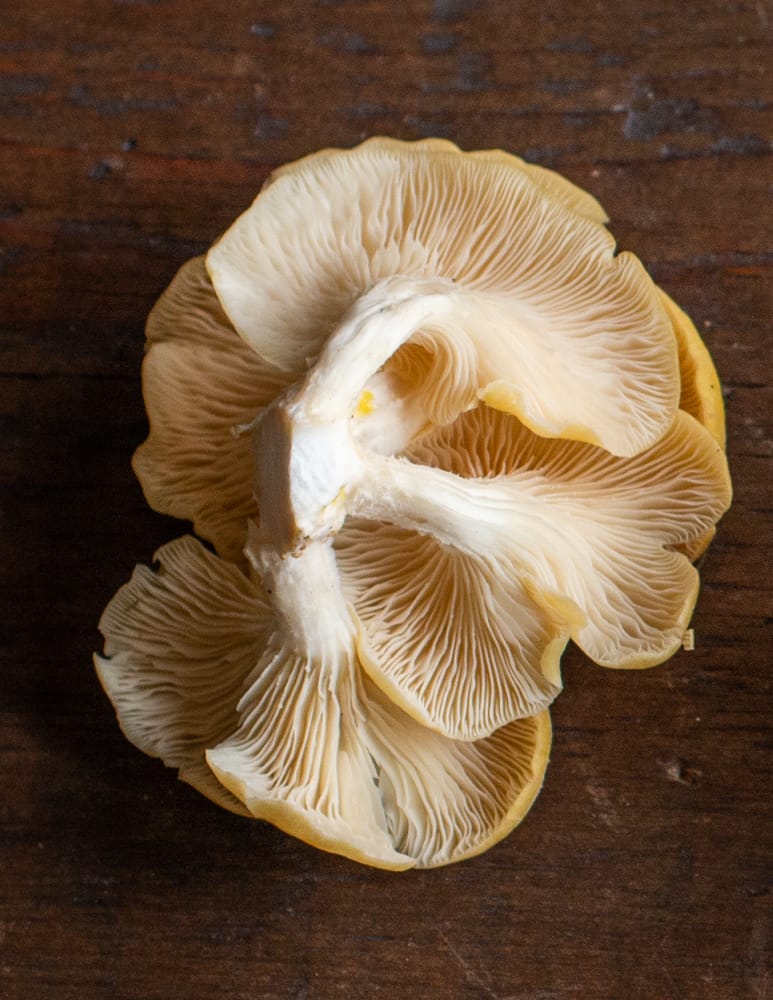
Saprobes that fruit like a pathogen
Secondly, and what I don't see discussed much, is their fruiting pattern. Like their cousins, golden oysters are decomposers.
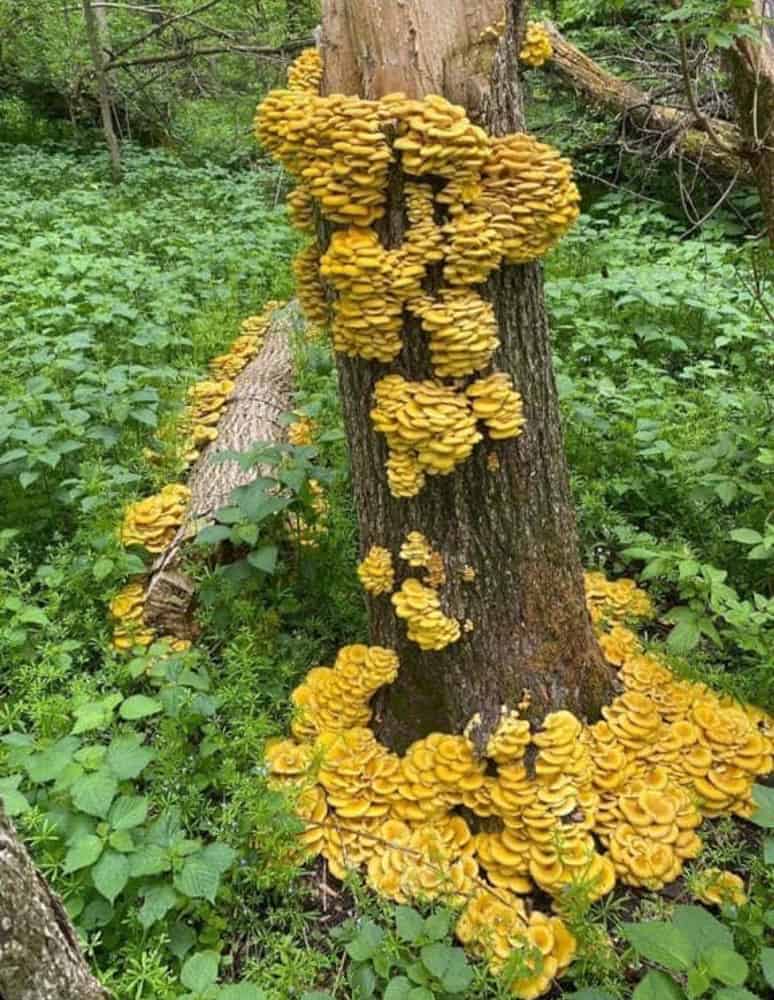
Unlike their cousins, their fruiting pattern more resembles a pathogenic fungus like honey mushrooms than their other oyster cousins. In short, they act like we'd expect an invasive mushroom would, fruiting in massive quantities compared to their native cousins.
Impact on morels
As someone who hunts a lot of morels with elms, the preference of golden oysters for dead elm trees, which the mushrooms seem to consume whole, initially worried me. As these mushrooms spread throughout the Midwest, what will happen to the morels? I have a theory.
Morels grow with dead elms, but also with other dying and disturbed trees. The intensity of Dutch Elm Disease is still real, but each year we move farther away from the epicenter, so to speak, and the dead elms that used to produce many morels are becoming more quiet.
There's a critical period for morel production with elms from my experience. You're looking for elms that are dying and shedding their bark to get the most morels. As the trees continue to decompose, other mushrooms like Cerioporus squamosus (pheasant back) and mica caps start to show up, and the morels eventually leave. To clarify, the morels leave the tree, but not the area.
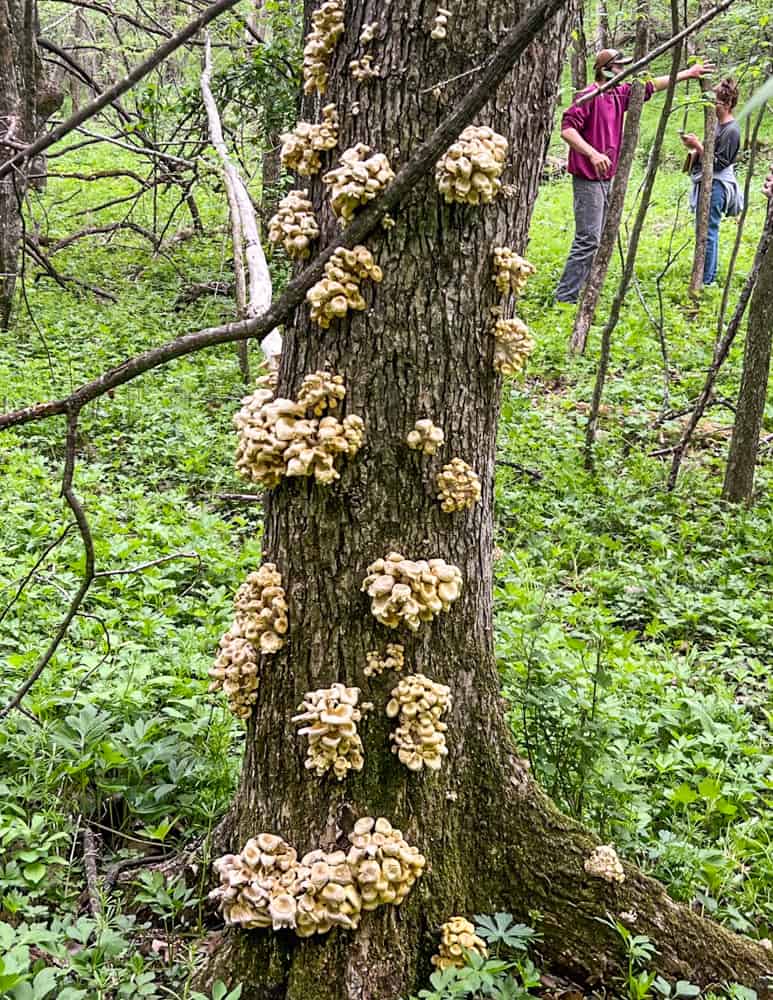
My theory, which is backed up by anecdotal evidence from a number of morel hunters in Minnesota and Wisconsin, is that the Midwestern Morels will still be found in quantity, but hunters may want to switch to looking at green and white ash trees affected by the emerald ash borer. Some morel hunters are already taking the cue, and I know people that now exclusively hunt green ash in the Midwest, instead of elms.
With the voracity that golden oyster mushrooms consume dead elm trees, many of which are past the perfect period for producing morels, kind of makes their impact on morels a moot point. We morel hunters just need to start looking for dying ash trees, instead of elms. Bitternut and shagbark hickory trees will produce morels too.
Identification
Common white oyster mushrooms are easy to identify, and bright yellow oysters are even easier. Here's a few quick tips.
Golden oyster mushrooms
- Have a sunny, bright yellow to golden brown cap
- Have a noticeably depressed center on the cap with age that resembles a funnel.
- Often grow in massive quantities, with trees producing many fruiting bodies.
- The stems are noticeably curved or bent.
- Have a white spore print.
- Young growing mushrooms will often be in very tight clusters.
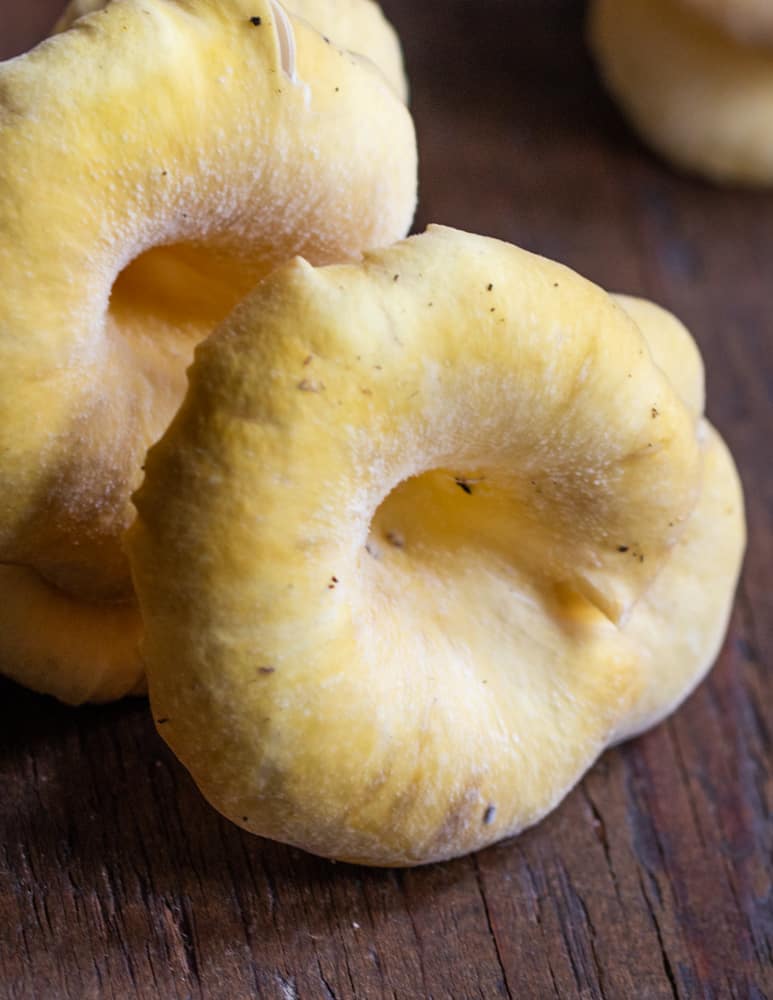
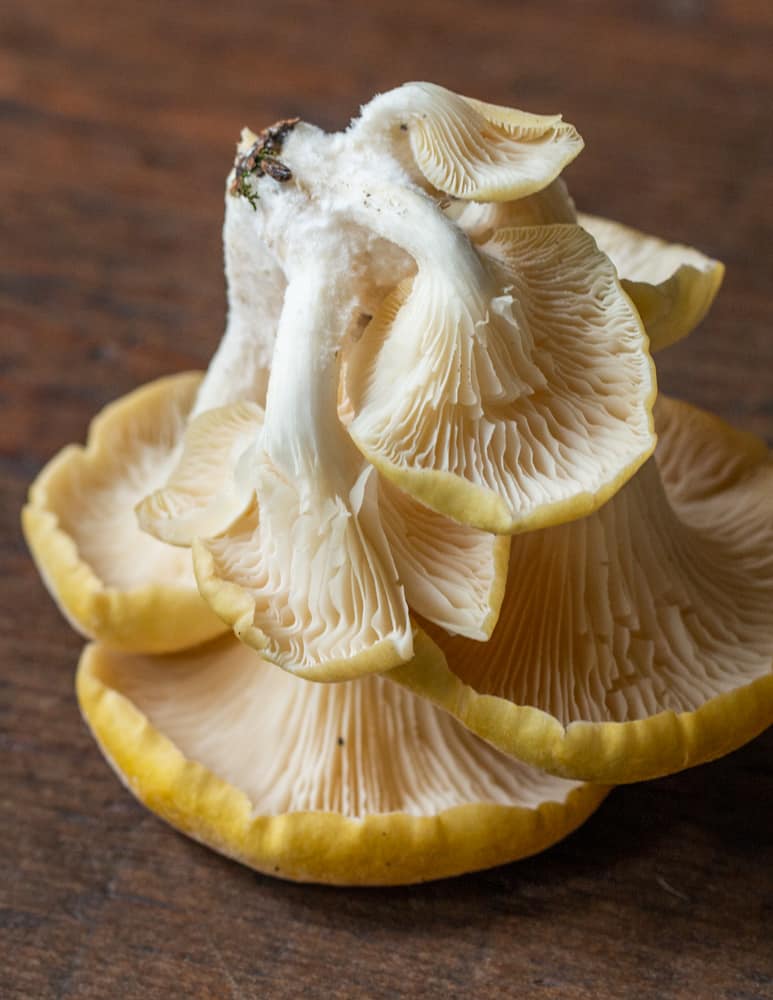
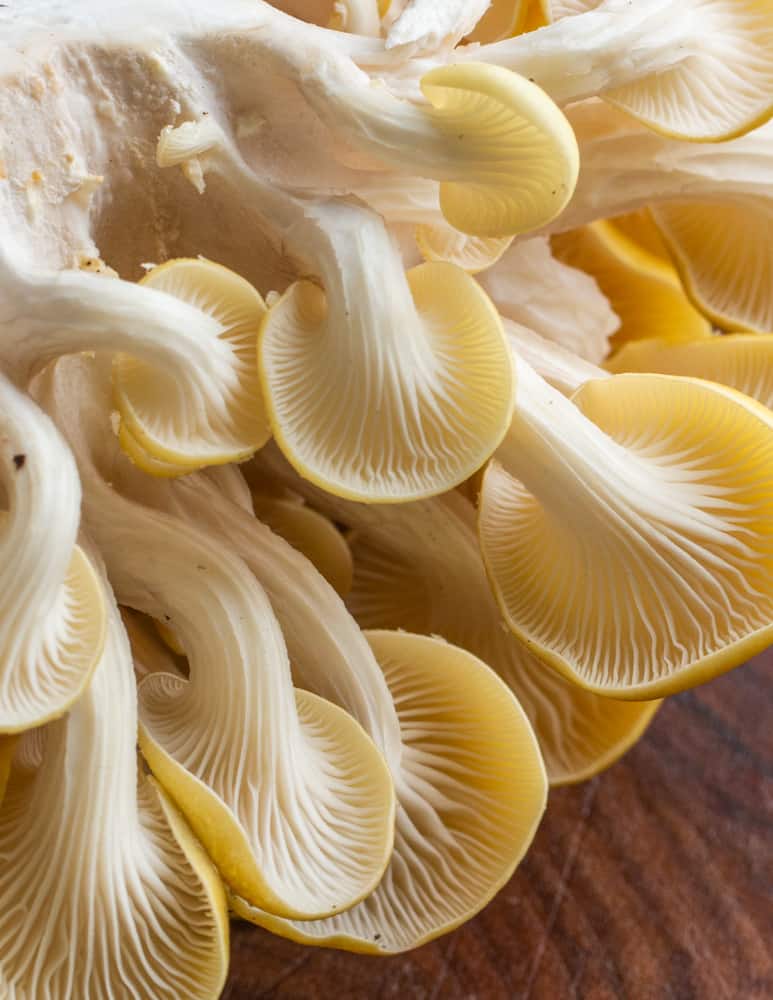
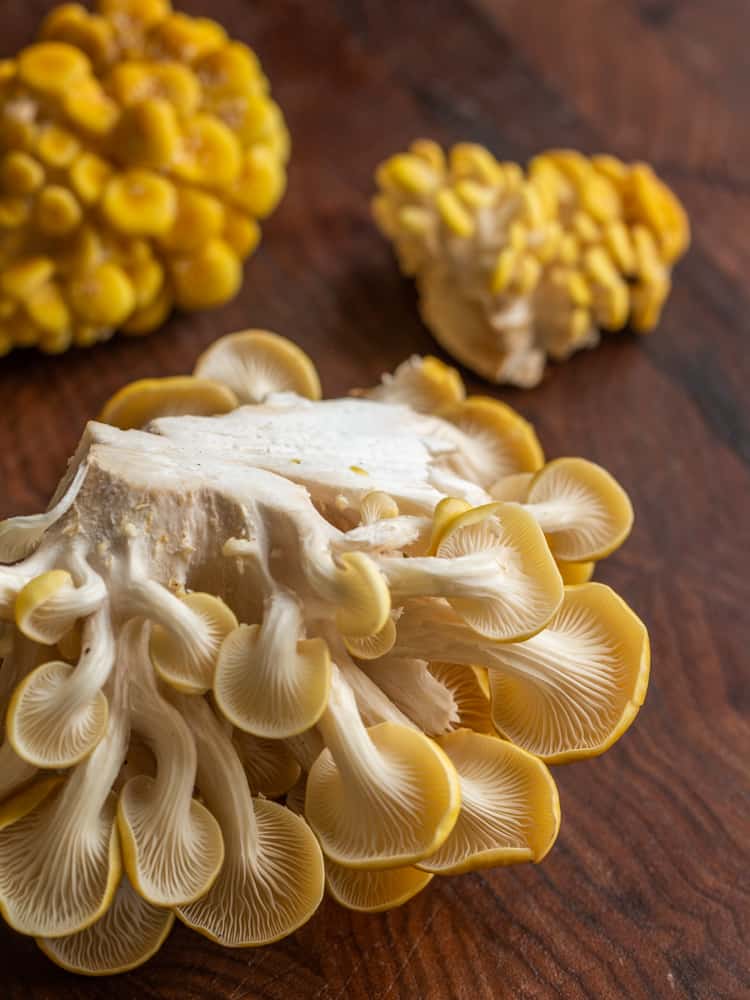
Harvesting
Invasive or not, these are delicious mushrooms with a sweet, nutty taste and good texture. The only issue, as with other oyster mushrooms, is getting them before the bugs do.
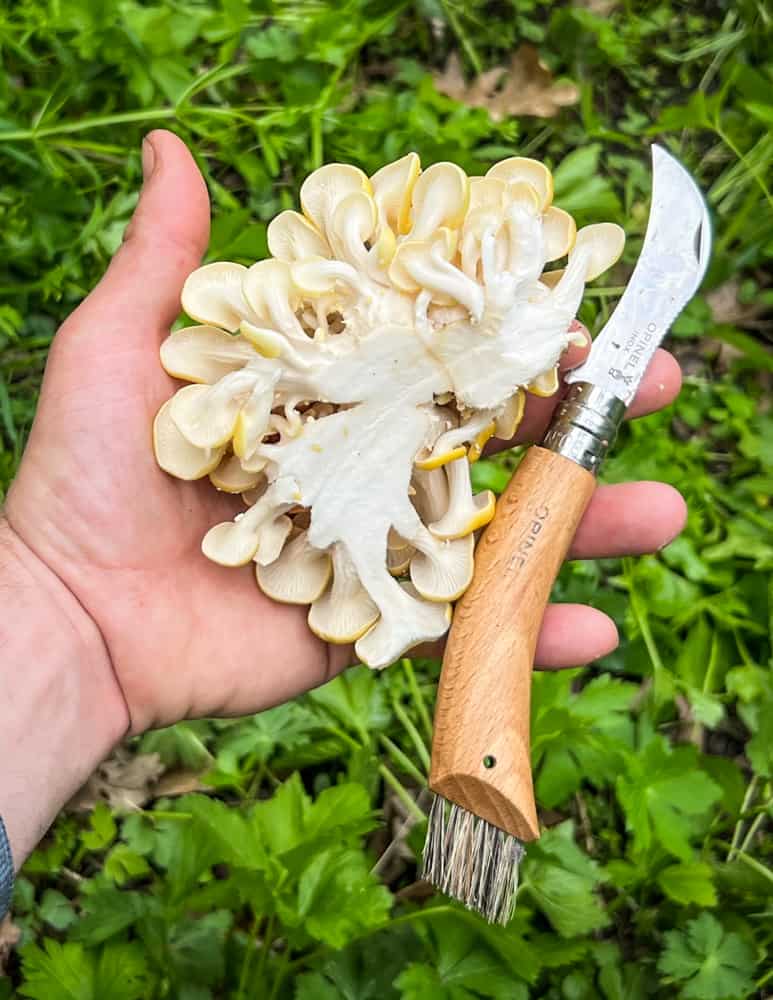
You are looking for very young mushrooms without bug holes in the stem. Cut them from the tree, inspect the stem, and keep them in large clusters when you can.
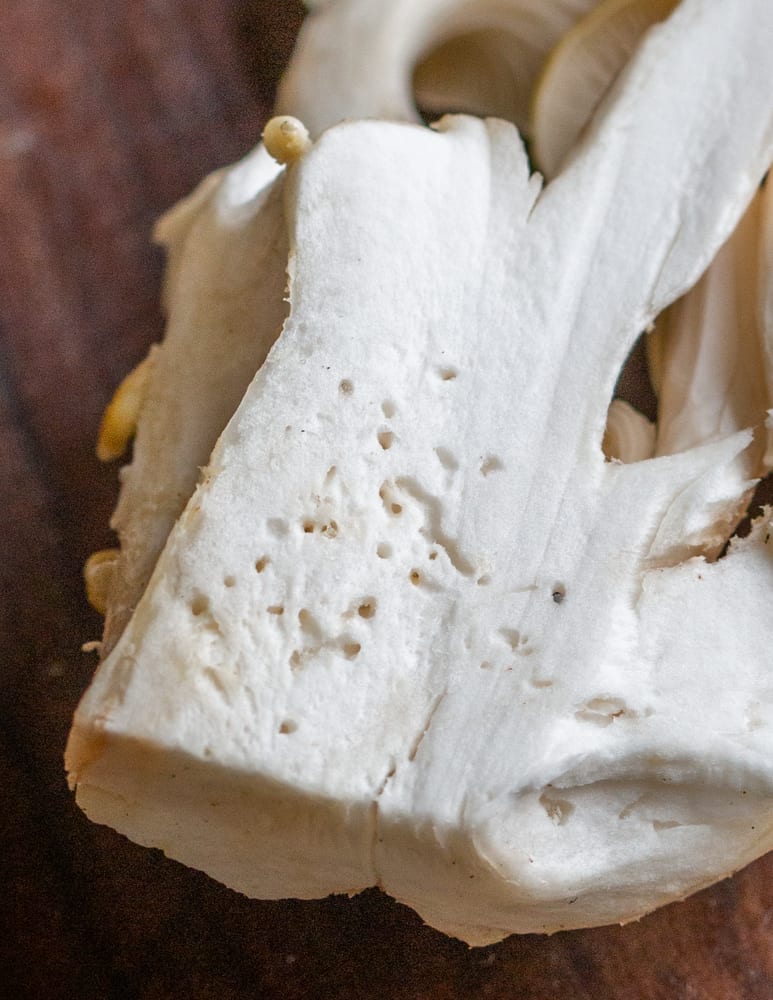
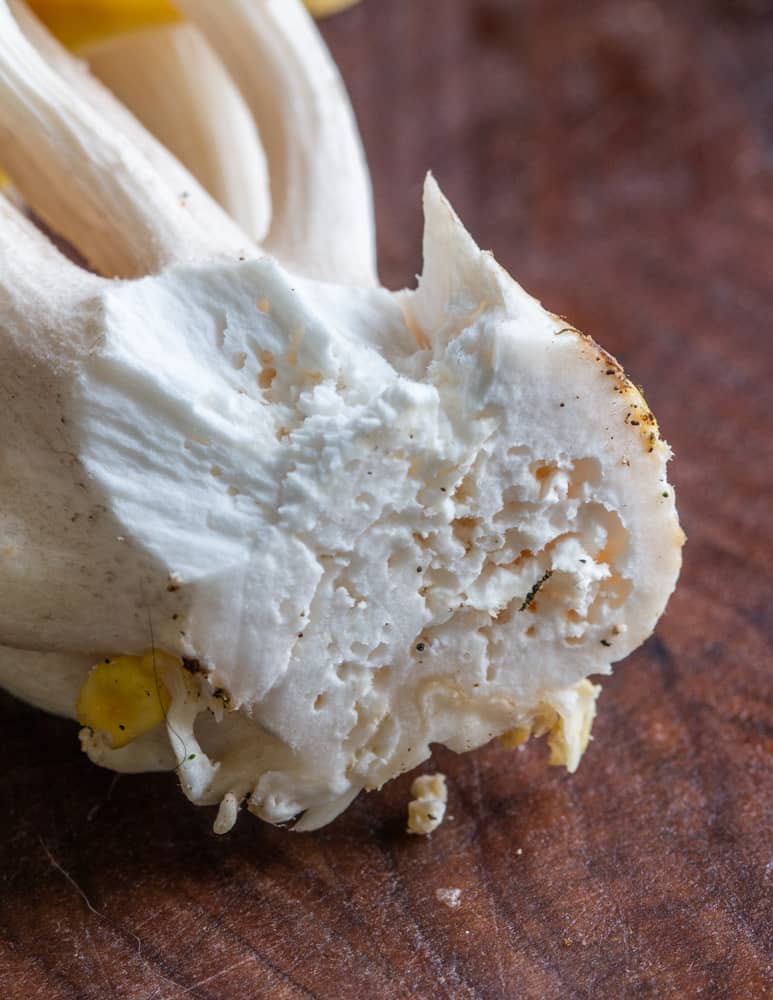
Buggy mushrooms can be dehydrated or cooked if they're still firm and fresh. Store them in a zip-top bag with a dry cloth in the fridge. Fresh mushrooms without bug damage will last over a week or more.
How to Cook Golden Oyster Mushrooms
These are a great wild mushroom for the table when young and bug free, with a mild, nutty flavor. You can use them in your favorite wild mushroom recipes, and they're just fine cooked until golden and slightly crispy with a little olive oil, butter and garlic.
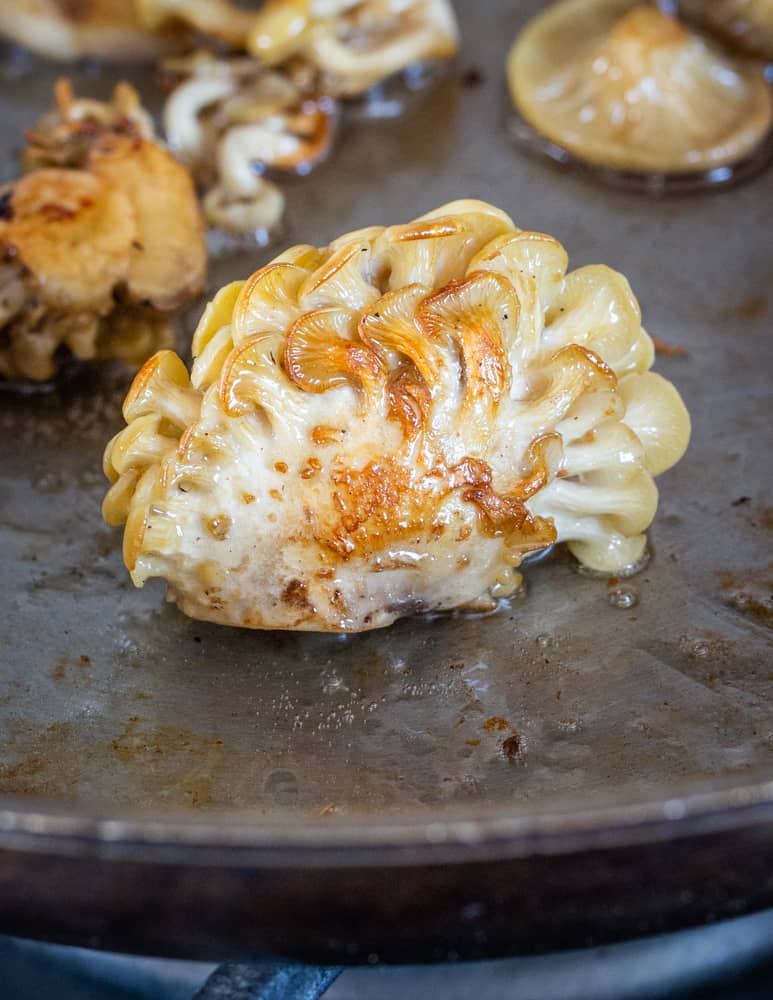
As they grow in clusters, my favorite recipe is oyster mushroom steaks.

Young mushrooms are also preferable to older ones as the mushrooms can get brittle with age. Older, flimsy mushrooms are good roasted to help them hold their texture. Grilling oyster mushrooms (and late fall oysters) is a great way to cook large quantities.
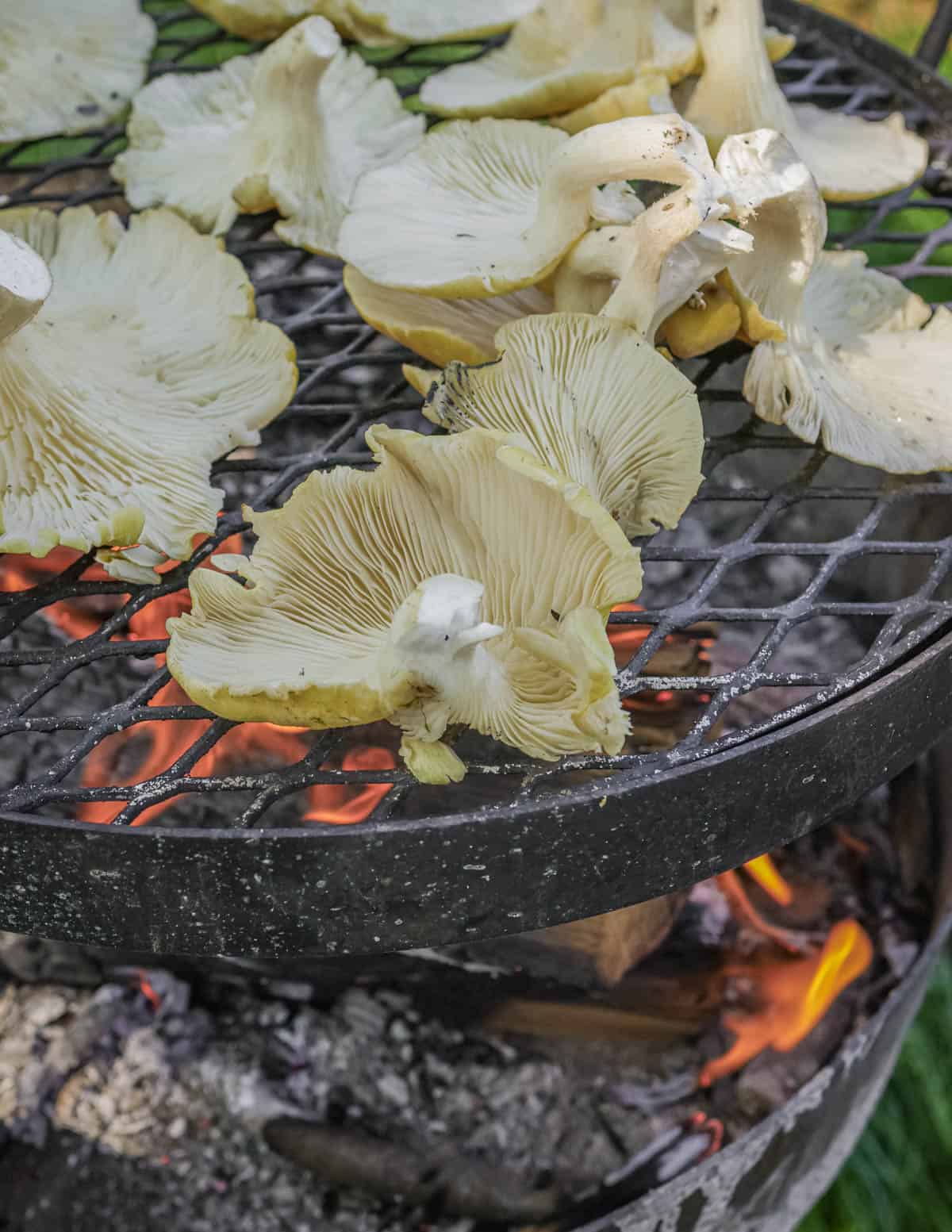
To make oyster mushroom steaks, I cook whole, large clusters roughly 4-6 oz each in a pan until wilted, then cover them with a weight and cook until golden brown and delicious. They make a great mushroom meat substitute with a rich smoky flavor you can add to sauces and pastas.
Preservation
To preserve mushrooms when you find large amounts you have a few options. Oysters mushrooms can be dehydrated, but will never be quite as tender as fresh and are best used for soup or mushroom powder.
Freezing is my favorite option. To freeze oyster mushrooms, cook the mushrooms in some butter until wilted and season them with salt.

Put the cooked mushrooms in a vacuum bag and freeze them, then seal the bag after it's frozen to prevent juice from being sucked into the sealer. Zip top bags work ok too.
Related Posts
References
Tracing the Naturalization of Golden Oyster Mushrooms in the United States

Naomi
VERY casual forager here, stumbled completely by accident on a treasure trove of golden oysters covering three or four down logs on a steep wooded hillside here in upstate New York (near Albany). Bushels of them! No problem identifying them! We shared the secret with a few close friends, and harvested young fresh mushrooms for four days -- stir fries, scrambles, drying, freezing, and the best spaghetti sauce I ever ate! I wish I'd seen this website earlier for the steak recipe and for preparing in clusters, I thought you had to cut them off the cluster to cook them, wasted a lot of good stem that way.
Is this usual or unusual in upstate New York? Are they likely to be back on the same logs next year? What else should we know to be good stewards of the wild mushroom world that just gave us this miraculous gift?
Alan Bergo
Hi Naomi. Golden oysters are invasive and there's currently a few studies going on regarding their rapid increase of their range. This is normal and there's nothing wrong with harvesting the mushrooms. The mushrooms are decomposing/consuming the trees. Nothing needs to be done to ensure they'll be back next year. If anything, go back around the same time and there maybe more.
Tara
I found large clumps of yellow oysters in Wisconsin yesterday. I left a clump of older ones (large, very light yellow to white, wavy edges on cap) on my counter overnight and they spored lilac gray (like a pearl oyster– Pleurotus ostreatus), not white. Any thoughts? Has anyone else seen this?
Alan Bergo
I haven't seen that.
Debbie Viess
Hello Alan!
I appreciate your thorough treatment on this concerning edible invasive, that has the "unfair" advantage of being both beautiful AND delicious.
Although now impossible to remove from the wild, and I agree that they are probably outcompeting other native fungal species (although not morels), at least you Midwesterners have a front row seat to fungal ecology in action! The introduction of non-native species, whether they be funga, flora or fauna, has serious and wide-ranging effects. Best to not contribute to this, if you can at all help it. Don't buy yellow oyster grow kits, for one thing.
But alas, in some areas, that fungal cat is waaaaaay outta the bag.
Alan Bergo
Agreed. Thanks Debbie.
Tracy
I found yellow oyster mushrooms today in northern Missouri. I’d never seen them before but I could tell they were oysters of some type. The information on this site confirms the identification and yes, the were on a dead elm! I ate a few this evening after sautéing in butter. They are very good. Tomorrow I’ll make some soup.
Alan Bergo
Have fun Tracy
Shannon Stephenson-Moore
Hello ! I’m so happy to find you. Good info for an “accidental” mushroom enthusiast. I love Morels but that’s about as far as I went into Shroom world until one day just walking to my back yard a bright Yellow bouquet caught my eye growing out of a tree? I was curious and after some research I concluded that I indeed found a tree with Golden Oysters in Missouri. Approximately 40 min N. of Kansas City. Needless to say, I’m hooked! They are not only beautiful but also delicious!
My only problem is that I can’t eat them ALL MYSELF! I’d like to find someone who wants some or how I could sell some????. Also, have you ever frozen them raw? We froze morels after bartering. (FYI Golden oysters are fantastic battered & fried like morels).
Sorry I wrote so much. My husband says I’m obsessed with “that tree”. 😱😊😩
Alan Bergo
Hi Shannon. Most states will require you to get a certificate on mushroom ID and take a course or two in order to be able to sell that at farmers markets, restaurants, etc. I'd just give them to friends and family if you have a lot, or they can be cooked until wilted, seasoned with salt and frozen. I don't freeze them from raw since they take up more space and many mushrooms don't have a great texture frozen from raw.
noelle
you are good and you know a lot about mushrooms. My aunt is a forager for mushrooms and we found some golden oysters today. We will cook them with your recipe!
Alan Bergo
Hey thanks Noelle.
Andrew
Nice article. I found some of these beauties today in Northern Missouri. I consulted my mushroom books and found they were not native to the area. The information here confirmed I indeed have found the golden oyster, and of course, Dubuque's not far away as the spore flies.
Alan Bergo
Thanks Andrew. I mean, I don't seriously think it was only the Dubuque fire, if that was really a thing. The folklore is half the fun sometimes. There's so many people growing these outdoors in our area they're just going to be another local species.
Celia
Are there any look-a-likes I should watch out for when foraging?
Alan Bergo
Not really, growing from wood in clusters with the bright yellow color is kind of unmistakable.
Bob Franklin
Alan, I love your recipes. Can golden oysters be used in place of regular oysters in other recipes? Any suggestions? Mine are already cut up individually, ready to stir fry.
Alan Bergo
Hi Bob. Yes you can substitute golden oysters for just about any mushroom.
Thane Maxwell
I don’t know much about it, and am open to learning more, but to me it seems like a pretty big leap to say that they are basically pathogenic simply because they fruit really big. They don’t cause disease, they don’t kill living trees etc. They are certainly big non-native saprobes. I am not clear on what really defines “invasive”, but again, it seems like a leap to say that because they are big that means they are spreading aggressively and pushing out other species. Perhaps those things are both true but they are 2 different statements. Thoughts?
Alan Bergo
Thane, my exact words are "fruits like a pathogen" which, if you know anything about mushroom foraging and other pathogenic species (honey mushrooms are a great example) they definitely do. It’s just my opinion, and I’m referring to it in a casual sense.
That kind of fruiting is analogous to the way that non-native plants often appear. Our native species haven't aren't used to them, so they have trouble competing with them. As for invasive mushroom status, there isn't a fungal invasive status protocol that I know of. I think a lot of things are under-standardized.
OysterFungi
The rumor about the fire is just that it seems, a rumor! A false one at that. There is no evidence of any fire like that, let alone one that matches up with the timeline of spread for golden oysters. Instead, there is actual research out sequencing the fungi caught in the wild and comparing to banked sequences including sequences from growers who sell grow kits. What that research has found, in summary, is that golden oysters have multiple points of introduction around the midwest and north east.
Alan Bergo
Nothing new here, really.
Susan
Hello Chef
My comments speak to your concern about golden oysters in some manner threatening your ability to harvest morels around dead or dying elm trees. Morels grow from the ground - from the soil. They do not use the wood of the tree for nutrition, but the underground network of mycelium from which the mushroom fruiting body springs, does have a relationship with specific trees, such as Elms. Once the tree dies or begins to die, this relationship is disrupted, and the mushroom sends up more fruiting bodies. On the other hand, oysters grow from dead and decaying wood from which they take their nutrition. Consequently, there is no real competition between the two mushroom species. I hope you find this helpful in understanding the relationships that mushrooms have with each other and their environment. Thank you for detailing how are you prepare them, looks delicious!
Alan Bergo
Hi Susan, thanks for commenting. I’m aware, and I have to say my experience says otherwise as elms with other mushrooms on them seem to push morels out, and golden oysters will readily infect elms at the stage morels like, as well as after the bark has fully shed. Either way it’s kind of a moot point as morels are growing in great quantity with green ash now too from the Emerald Ash Borer. I’ve been enjoying oysters as a bonus when picking morels the last few years.
John Denk
I agree with Susan. She has her facts right. I've been picking Morels for decades, and I'm well-read on why they fruit heavily around dying and dead elms. They do not consume Elm tree wood and have no need for the dead tree to remain in place.
Morels are mycorrhizal partners with Elm trees. The Morel mycelium down in the ground sort of work as an extended root system for the tree, providing water and other stuff in the soil that the tree needs and the tree supplies food to the Morel organism down under the ground.
The morels fruit en masse when they stop receiving food from the Elm as it dies. It's sort of their last shot at reproducing before they can't survive in connection with the dead/dying tree. At the point we're talking about here, it makes no difference to the Morels if other mushrooms consume the whole tree.
Alan Bergo
Hi John, let me clarify a few things.
Of course morels are mycorrhizal and oysters are saprobic, that's not up for debate. The other thing that isn't up for debate is that golden oysters will infect and consume elm trees at any age. If there was, say, a pure grove of elm trees, and the golden oyster mushrooms infect half of them, morels aren't going to show up from that disturbance. We're not losing a specific amount of mushrooms as that isn't really quantifiable, what we're losing is the potential for them. Even though we can't count them, it is still a loss of mushrooms.
The giant old elms that still produce are getting fewer and farther between. What I suspect will happen is that there will still be morels with elms, of course, but, as is happening now in Western Wi, people will start picking them with other trees they've also traditionally grown with that haven't received as much attention in the Upper Midwest. Hickory, and especially green ash are good producers, and some old timers have switched to green ash completely now. Hope that clarifies may logic here, which I stand behind.
Abigail Muehlhaus
After cooking to wilt and freezing therm, can you just thaw then re-heat in a pan?
Alan Bergo
Yes.
Abigail Muehlhaus
Should they not be frozen raw/uncooked?
Alan Bergo
No don’t freeze the raw. Mushrooms contain water. When it freezes it tears the flesh and makes them limp and watery. Freezing from raw is ok with some species (porcini) but it can ruin the texture of others (chicken of the woods) or create really bad aromas (puffballs, lions mane).
Joy
Great post.
john E hockstadt
Can you dehydrate golden mushrooms?
Alan Bergo
Yes.
Andi
Yes, but if you do it indoors (as with a food dehydrator) be prepared for your home to smell like a fish market!
Alan Bergo
I can second that.
Quinton
As far as bugs go can't you just soak in warm salt water to take care of that?
Alan Bergo
If you’re harvesting mushrooms with bugs in them they should be dried. Mushrooms should never be soaked in salt water.
Jason
Can you expand on this? I’ve been told to put Morels in salt water to draw out bugs.
Alan Bergo
Soaking morels in salt water is a common-repeated piece of folk wisdom that drives me crazy. The mushrooms absorb too much water this way. It's ok to clean them by dipping and swishing in water, but not submerged, and definitely not with salt. If people are harvesting morels with bugs in them, they should be dehydrated.
Curtis Ludemann
Alan me being from NE Iowa we have basically lost every Ash tree to the Bore Bug. I check every ash tree I find and there are thousands of them around the State. But I have yet to find any morals around them. This has been going on now for at least 6 yrs. Many friends have had the same experience of never any morals around them. Do you know the reason why or can you speculate why this is happening? I used to think that the only good to come from the Ash Bore Beetle was the coming of morals but don't think that anymore. Thank you in advance and a very well written article. Just picked some Goldens today before I've even found a single Grey or Yellow Morals. Definitely early for Golden Oysters here.
Alan Bergo
Hey Curtis, I can't speak to that. You might try looking with cottonwoods too, I just got a nice flush of morels with them yesterday.
Craig Moorhead
Being from SE MN, I must agree with Curtis. I have searched around countless dead/dying ash trees since EAB arrived, and not found a single morel near them. Over 95% of my morels still occur near dead elms, dying apple trees, and sometimes a black oak. Used to find some year after year near a stand of living soft maples long ago, as well. As with all of us older hunters with many decades of experience, I know what it is like to stumble across morels in some very odd places, too. Like the middle of a grassy pasture with no trees around at all. Am now happy to be harvesting golden oysters after a disappointing morel season. All the rain showers quit just as things were starting to happen.
Alan Bergo
We picked a few pounds of morels with green ash west of Rochester yesterday, my big elms there were all quiet there but a few small ones were popping. The ash definitely don’t seem to give the volume a good elm will though, and the oysters were the bulk of the day.
Tony
Considering how prolific these are, how do you preserve them? Duxelles?
It would be great if you could wilt them and freeze them in steak form, but I don't know how well they'd keep that way.
Alan Bergo
That's a good point Tony. Yes, these make good duxelles. I'm going to add a note about preservation now that you mentioned it. I also steam them and freeze or sous vide and it works well.